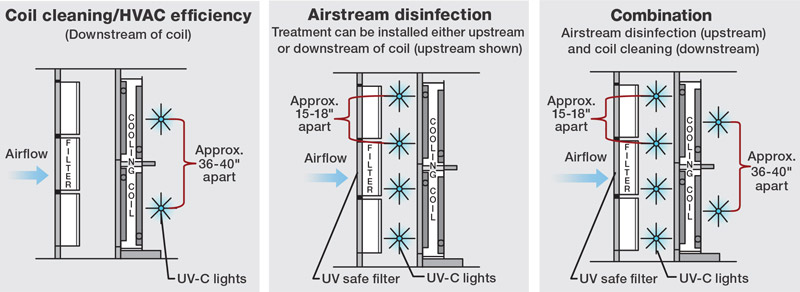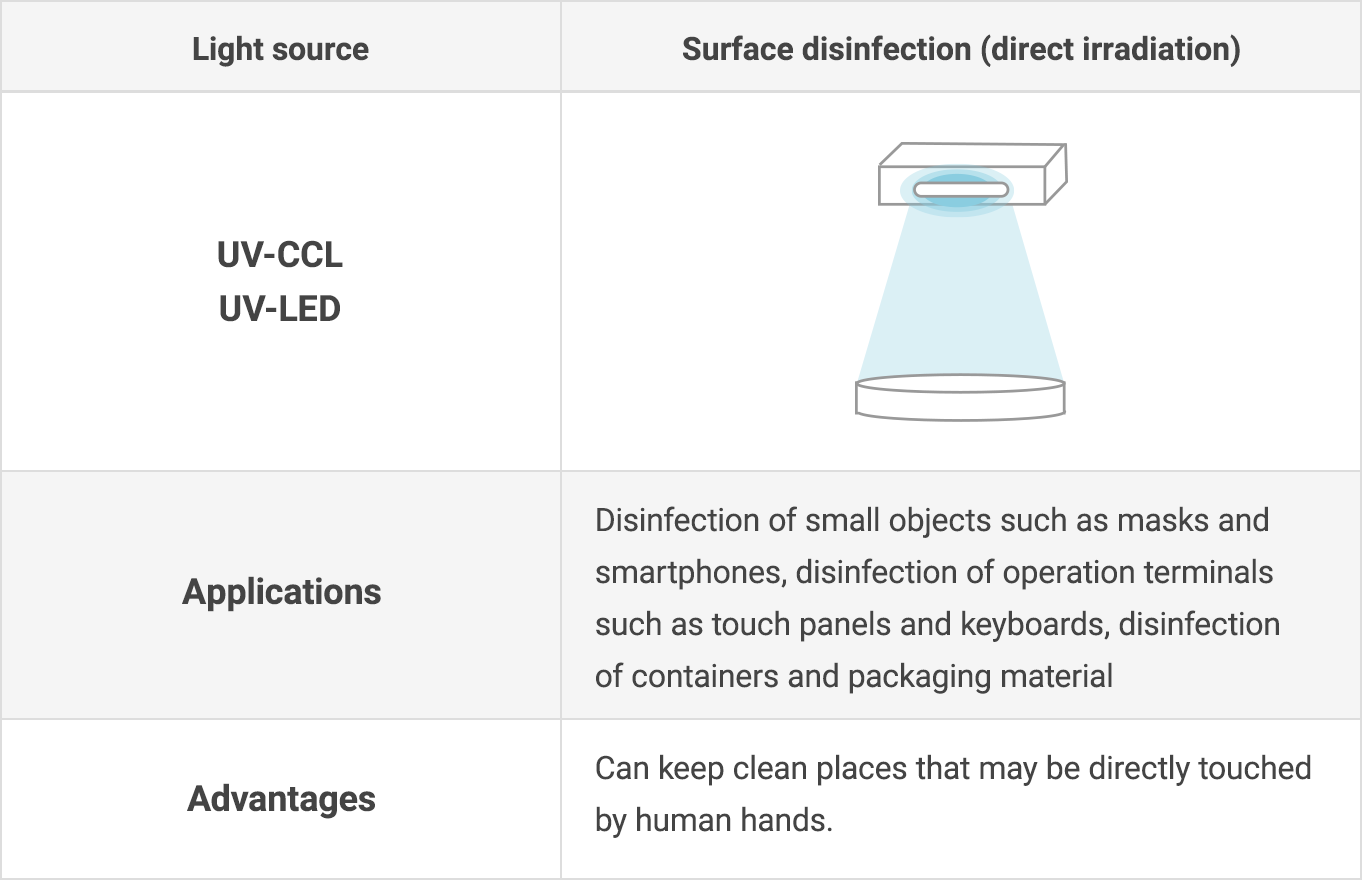Harnessing the Power of UV Surface Disinfection: A Comprehensive Overview for Healthier Spaces
Harnessing the Power of UV Surface Disinfection: A Comprehensive Overview for Healthier Spaces
Blog Article
Harnessing the Possible of UV Disinfection: Shielding Health And Wellness and Hygiene
UV disinfection, a modern technology widely utilized in different sectors, has shown efficient in removing hazardous microorganisms. From recognizing the mechanisms at play to implementing this innovation in our day-to-day lives, this conversation intends to shed light on the potential of UV sanitation and its role in protecting our health and wellness and hygiene.
Comprehending UV Sanitation
UV disinfection is an extremely reliable and extensively used technique for removing unsafe microorganisms and making certain health and wellness and hygiene. This strategy utilizes ultraviolet (UV) light to inactivate bacteria by damaging their DNA and preventing them from replicating. UV disinfection is particularly efficient versus germs, infections, and other microorganisms that can create conditions and infections.
The concept behind UV disinfection is basic yet effective. When UV light is produced at a specific wavelength, it penetrates the microbe's cell wall and interrupts its genetic product. This process, called photodissociation, results in the development of thymine dimers, which protect against the microbe from duplicating and rendering it safe. UV sanitation can be used in different settings, including water therapy plants, health care centers, food handling industries, and air filtration systems.
Among the advantages of UV disinfection is its capability to efficiently and efficiently remove a large range of virus without the requirement for ingredients or chemicals. Unlike various other disinfection methods, such as chlorine or ozone, UV sanitation does not introduce unsafe spin-offs or chemical deposits into the setting. Additionally, UV sanitation is a non-contact process, which suggests that it does not need physical call with the microorganisms, decreasing the risk of cross-contamination.

The Science Behind UV Sanitation
The effectiveness of UV sanitation hinges on its capacity to disrupt the hereditary product of microorganisms, making them incapable to reproduce and consequently removing their harmful capacity. UV, or ultraviolet, radiation is a form of electro-magnetic radiation with wavelengths shorter than visible light. It is classified into 3 types: UV-B, uv-c, and uv-. UV-C radiation, especially, has the shortest wavelength and the highest possible power. Because it can permeate the cell wall surfaces of microbes and damage their DNA or RNA., this high-energy UV-C radiation is most efficient in sanitation applications.
When bacteria are subjected to UV-C radiation, the energy is taken in by their genetic material, creating bonds to damage and developing chain reactions that disrupt their capability to duplicate. This protects against the bacteria from reproducing and spreading out infection. UV disinfection is particularly reliable against germs, viruses, and fungi, consisting of common pathogens such as Escherichia coli, Salmonella, and Flu.
The scientific research behind UV sanitation is supported by extensive study and research studies. It has been revealed that exposure to a sufficient dosage of UV-C radiation can attain a high level of disinfection, often going beyond 99.9% effectiveness in killing microbes. It is essential to keep in mind that the efficiency of UV sanitation depends on various variables, including the strength of UV-C radiation, exposure time, range from the UV resource, and the susceptibility of the microbe to UV radiation (uv surface disinfection).
Applications of UV Disinfection
Provided the extensive research study and efficiency of UV disinfection in interfering with the genetic product of microbes, it is vital to explore the different sensible applications of this innovation. UV sanitation has actually proven to be a useful tool in a wide variety of industries where preserving a tidy and secure atmosphere is essential.
One major application of UV sanitation remains in health care settings. UV light can be used to sanitize surface areas, tools, and also the air in health centers and medical facilities. This assists to minimize the threat of healthcare-associated infections and ensures a safer atmosphere for individuals and health care employees.
An additional crucial application remains in the food and drink sector. UV sanitation is used to treat water and eliminate hazardous virus, such as E. coli and Salmonella, from the production process. uv surface disinfection. This ensures the safety and quality of the products we consume
UV disinfection is additionally extensively used in water treatment plants and wastewater treatment facilities. It is an effective approach for damaging unsafe microorganisms, infections, and bloodsuckers that can be existing in water sources. This assists to offer secure and tidy alcohol consumption water to neighborhoods and safeguard the atmosphere from contamination.
Furthermore, UV disinfection is employed in the pharmaceutical sector to decontaminate devices and preserve the integrity of items. It is additionally made use of in research laboratories and study facilities to stop contamination and ensure exact outcomes.
Advantages of UV Sanitation Innovation
One significant benefit of employing UV sanitation innovation is its useful content capability to effectively get rid of microbes without making use of severe chemicals. This is especially beneficial in numerous setups, such as healthcare centers, water therapy plants, and food processing sectors, where the existence of hazardous virus presents a considerable risk to public wellness and security.
Unlike traditional sanitation methods that count on chemicals like chlorine or ozone, UV disinfection modern technology uses ultraviolet light to target and destroy the DNA of microbes, successfully counteracting their capability to reproduce and trigger infections. This process not only eliminates the requirement for possibly damaging chemicals but likewise minimizes the risk of chemical deposit or results staying in the cured environment.

Additionally, UV sanitation innovation is eco-friendly. As it does not rely upon the use of chemicals, it eliminates the need for their disposal, transport, and manufacturing, decreasing the general carbon footprint related to disinfection processes. Additionally, UV disinfection systems have a longer lifespan compared to chemical-based methods, resulting in much less constant substitute and additional minimizing waste.
Applying UV Sanitation in Day-to-day Live
To properly apply UV sanitation in every day life, companies and people can integrate portable UV disinfecting tools right into their hygiene routines and cleaning techniques. These tools are created to send out ultraviolet light, which has actually been verified to kill or inactivate a variety of bacteria, including bacteria, infections, and fungi. By using mobile UV sanitizing tools, individuals can disinfect frequently touched surfaces and things, such as mobile phone, keys, doorknobs, and laptop computers, decreasing the threat of spreading out bacteria and infections.
In addition to including portable UV disinfecting devices, it is essential to comply with correct guidelines and referrals for efficient UV sanitation. This includes making sure that the device is utilized appropriately and for the suggested period to achieve ideal sanitation results. It is also critical to prioritize safety and security measures, such as putting on protective eyewear and staying clear of direct exposure of the UV light to the skin.

Additionally, companies can execute UV sanitation innovation in various settings to enhance hygiene practices. For example, medical facilities and medical care centers can use UV disinfection robotics to disinfect person spaces, operating theaters, and other high-touch locations. Food processing industries can incorporate UV sanitation systems right into their assembly line to enhance food safety and security and protect against contamination.
Final Thought
In conclusion, UV sanitation technology holds wonderful possible in safeguarding wellness and hygiene. With its numerous visit site advantages, UV sanitation is a valuable tool for keeping a clean and healthy setting.
Unlike other disinfection approaches, such as chlorine or ozone, UV disinfection does not introduce dangerous spin-offs or chemical deposits into the environment. It is essential to keep in mind that the effectiveness of UV disinfection depends on various factors, including the intensity of UV-C radiation, direct exposure time, range from the UV resource, and the sensitivity of the microbe to UV radiation.
An additional benefit of UV sanitation innovation is its capability to supply quick and constant disinfection. Unlike manual cleansing techniques, which can be time-consuming and require significant labor, UV sanitation systems can be automated and run constantly, making sure constant disinfection without human intervention.To efficiently execute UV disinfection in daily life, people and companies can incorporate mobile UV disinfecting gadgets into their hygiene regimens and cleaning up methods.
Report this page